Der Knopf
Posted on Mi 08 Mai 2019 in Computer & Electronics
This is a re-post of an article I originally published in June 2015 on our CE&PP Techblog. I have recently built a few more of these buttons and so I thought, I'd move the post to my new blog.
"Just press the button" has turned into a running gag in our department, because some people think that re-doing a data analysis that has been scripted doesn't take more than a simple press of a button. That does not always go down well with the people who "just press the button". So I thought I'd address this – literally.
So I needed a button that automatically runs stuff. In my parts bin I found a few AVR USB microcontroller sticks like this:
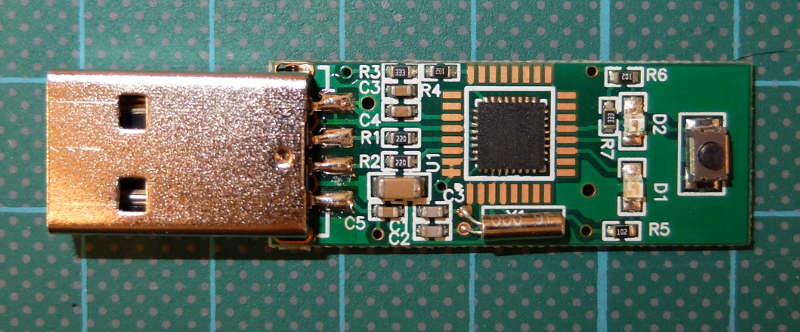
It was something like 3.50€ at the friendly chinese ventor on eBay and it's great tinkering material: AT90usb162 microcontroller, a small button, two LEDs – what else could you want? But the tiny button did not match my rather bold vision of a real button. So I replaced the USB-A connector with a long usb cord and soldered some wires to the tiny button. Those were connected to a big red palm switch. I stuck the pcb to the inside of the switch with double-sided sticky tape and botched together a strain relief from a zip tie and some Sugru:
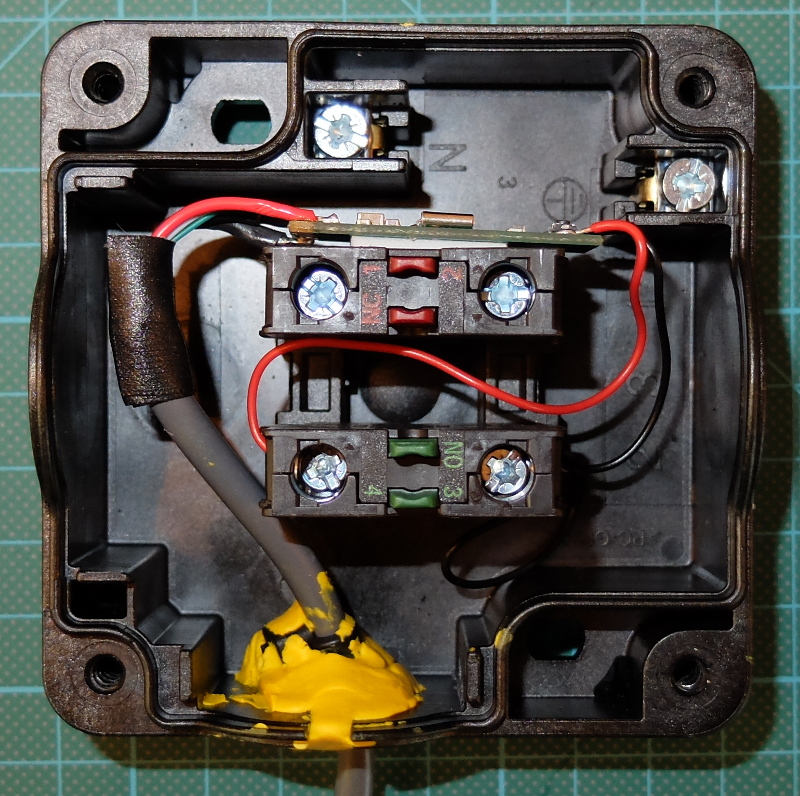
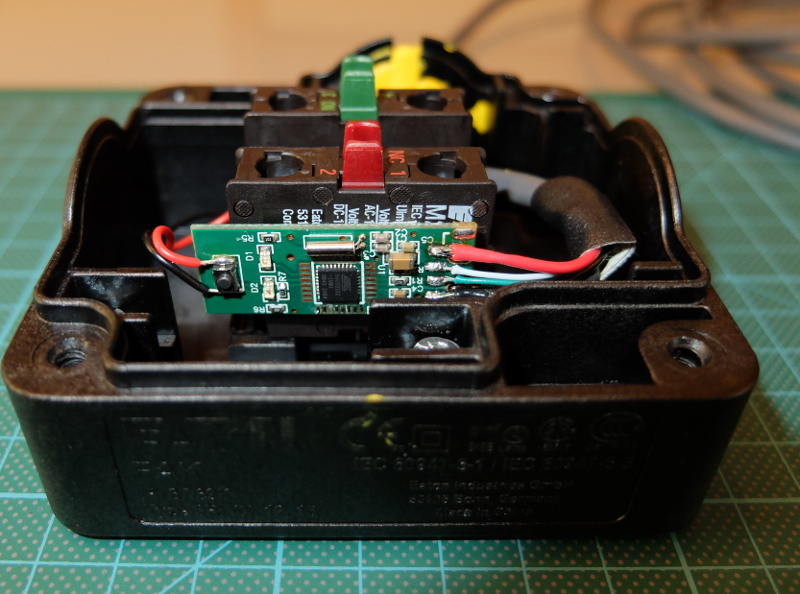
Reassemble the case and we are finished with the hardware part:
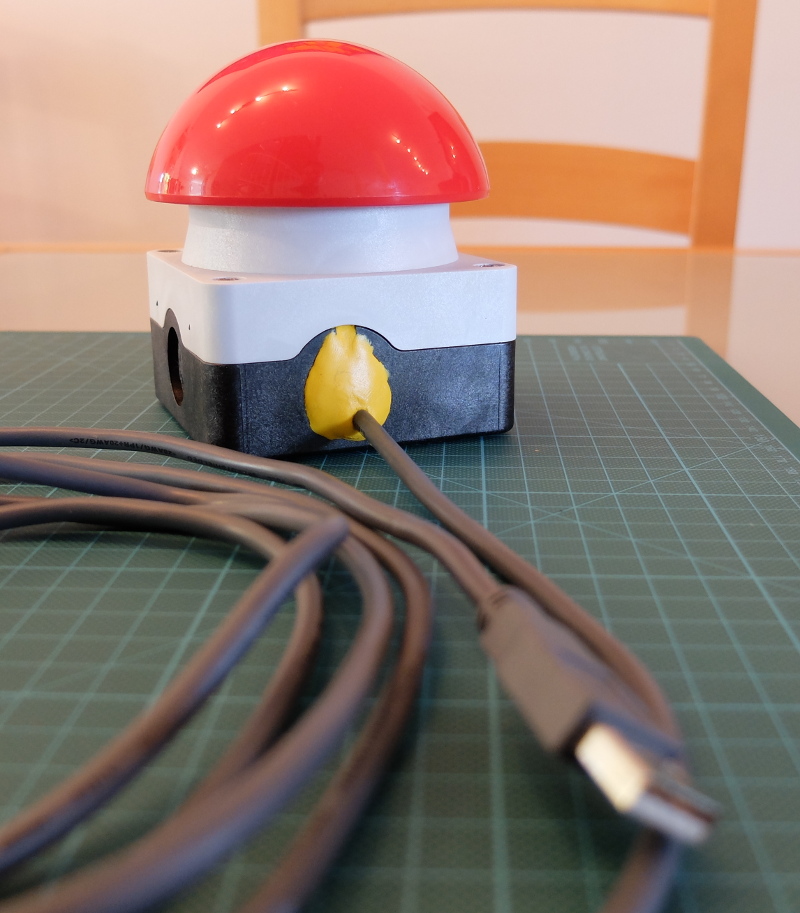
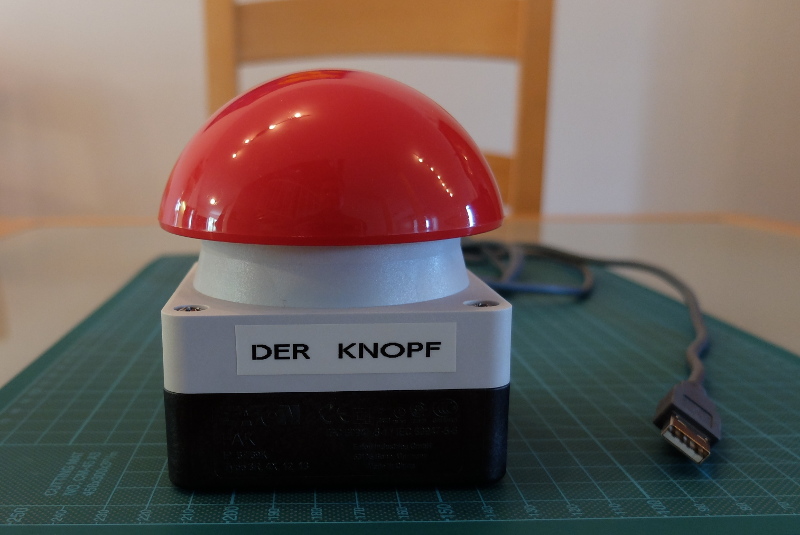
Looks good. Now we need firmware – that was easy enough: I stole some USB-HID demo code that was intended for the Teensy and adapted it to my needs. This is the main program:
/*
* DER KNOPF
*/
#include <avr/io.h>
#include <util/delay.h>
#include "usb_keyboard.h"
#define CPU_PRESCALE(n) (CLKPR = 0x80, CLKPR = (n))
int main(void){
uint8_t lock; // locking flag
CPU_PRESCALE(0);
DDRD &= ~(1<<PD7); // configure PD7 as input
PORTD |= (1<<PD7); // turn on pull-up
usb_init();
while (!usb_configured()); // wait for host
_delay_ms(1000); // sleep 1 more second, just in case
lock = 0; // unlock key
// job loop
while (1) {
if ( !(PIND & (1 << PIND7)) ){
// key pressed
if ( !lock ) {
lock = 1; // lock key
// type command
usb_keyboard_press(KEY_R, KEY_LEFT_GUI);
_delay_ms(300); // wait for dialog to open
usb_keyboard_press(KEY_D, 0);
usb_keyboard_press(KEY_E, 0);
usb_keyboard_press(KEY_R, 0);
usb_keyboard_press(KEY_K, 0);
usb_keyboard_press(KEY_N, 0);
usb_keyboard_press(KEY_O, 0);
usb_keyboard_press(KEY_P, 0);
usb_keyboard_press(KEY_F, 0);
usb_keyboard_press(KEY_PERIOD, 0);
usb_keyboard_press(KEY_B, 0);
usb_keyboard_press(KEY_A, 0);
usb_keyboard_press(KEY_T, 0);
usb_keyboard_press(KEY_ENTER, 0);
}
} else {
// key released
lock = 0; // unlock key
}
_delay_ms(100); // delay for debouncing
}
}
Once connected to a computer, Der Knopf identifies as a USB-HID device,
specifically, it claims to be a Cherry keyboard (you can configure the USB ID
in the usb_keyboard.c file). Pressing the button then auto-types Win+R
(i.e. "run command" in Windows) followed by "DERKNOPF.BAT". So all that's
left to do is ensuring that there is a batch file of that name to be found in
the user's path (e.g. C:\users\phil) and voila – the button does it's bidding.